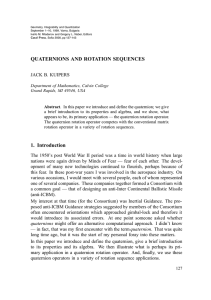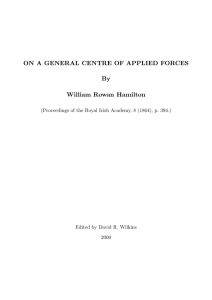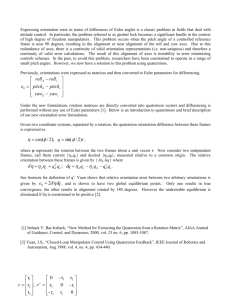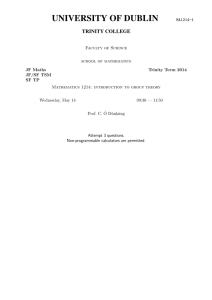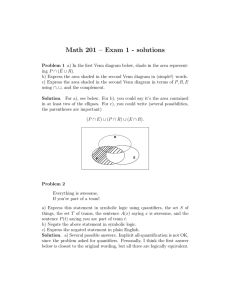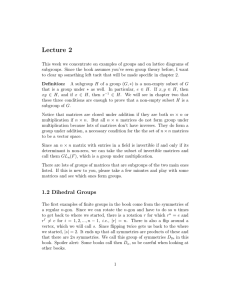Leiba Rodman: Topics in Quaternion Linear Algebra, Princeton University Press, 2014.
advertisement
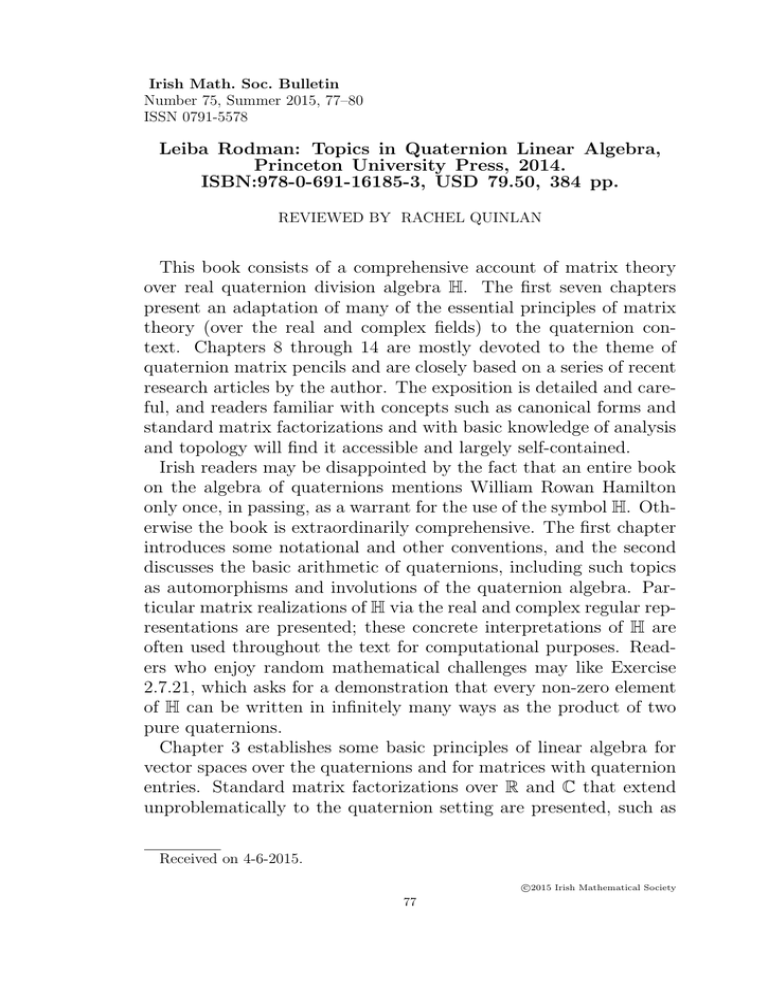
Irish Math. Soc. Bulletin Number 75, Summer 2015, 77–80 ISSN 0791-5578 Leiba Rodman: Topics in Quaternion Linear Algebra, Princeton University Press, 2014. ISBN:978-0-691-16185-3, USD 79.50, 384 pp. REVIEWED BY RACHEL QUINLAN This book consists of a comprehensive account of matrix theory over real quaternion division algebra H. The first seven chapters present an adaptation of many of the essential principles of matrix theory (over the real and complex fields) to the quaternion context. Chapters 8 through 14 are mostly devoted to the theme of quaternion matrix pencils and are closely based on a series of recent research articles by the author. The exposition is detailed and careful, and readers familiar with concepts such as canonical forms and standard matrix factorizations and with basic knowledge of analysis and topology will find it accessible and largely self-contained. Irish readers may be disappointed by the fact that an entire book on the algebra of quaternions mentions William Rowan Hamilton only once, in passing, as a warrant for the use of the symbol H. Otherwise the book is extraordinarily comprehensive. The first chapter introduces some notational and other conventions, and the second discusses the basic arithmetic of quaternions, including such topics as automorphisms and involutions of the quaternion algebra. Particular matrix realizations of H via the real and complex regular representations are presented; these concrete interpretations of H are often used throughout the text for computational purposes. Readers who enjoy random mathematical challenges may like Exercise 2.7.21, which asks for a demonstration that every non-zero element of H can be written in infinitely many ways as the product of two pure quaternions. Chapter 3 establishes some basic principles of linear algebra for vector spaces over the quaternions and for matrices with quaternion entries. Standard matrix factorizations over R and C that extend unproblematically to the quaternion setting are presented, such as Received on 4-6-2015. c 2015 Irish Mathematical Society 77 78 RACHEL QUINLAN the Gaussian elimination algorithm, the singular value decomposition, and the QR factorization for a square quaternion matrix. A detailed analysis of topological and geometric properties of numerical ranges of quaternion matrices is provided, with respect to general involutions as well as the standard quaternion conjugation. Your (routine but informative) challenge from the exercises in this chapter is to show that every element of Hn×n that has a right inverse also has a left inverse and that these coincide, and to calculate the inverse in H3×3 of the matrix 0 i j −i 0 k . −j −k 0 The next two chapters consider canonical forms, for congruence classes of hermitian and skew-hermitian quaternion matrices (Chapter 4) and for similarity classes of square quaternion matrices (Chapter 5). A quaternion matrix A is said to be hermitian if it equal to its conjugate transpose A∗ , and skew-hermitian if A = −A∗ . If A ∈ Hn×n is hermitian then x∗ Ax ∈ R for all x ∈ Hn×1 , and so concepts such as positive definiteness for hermitian matrices extend unproblematically to the quaternion setting. Canonical forms are established in Chapter 4 for quaternion matrices that are hermitian or skew-hermitian, in the above sense or with respect to an involution φ other than the standard conjugation. The development and the results appear to be analagous to the theory over C. Chapter 5 introduces the left and right spectra of a square quaternion matrix and the quaternion analogue of the Jordan canonical form. If A ∈ Hn×n , then λ ∈ H is a right eigenvalue of A if Av = vλ for some nonzero v ∈ Hn×1 , and µ ∈ H is a left eigenvalue of A if Au = µu for some nonzero u ∈ Hn×1 . It is easily confirmed that if λ is a right (or left) eigenvalue of A then so also is every element α−1 λα of the conjugacy class of λ in the multiplicative group H× of the quaternion division algebra. So eigenvalues of quaternion matrices are not really single elements but conjugacy classes. There is no general connection between the left and right spectra of an element of Hn×n and they may be disjoint. There is a Jordan canonical form theorem for quaternion matrices; it resembles the usual statement for algebraically closed fields except that the eigenvalues that appear in the Jordan blocks are determined only up to conjugacy in H× . The exercises in Chapter 5 reveal some unsettling failures BOOK REVIEW 79 of reliable certainties of linear algebra to translate to the division 1 i ring setting. The harmless-looking example shows that a j k quaternion matrix need not be similar to its transpose, and even that the transpose of an invertible quaternion matrix need not be invertible. One of the issues here seems to be that it is possible for a set of column vectors to be right linearly independent but not left linearly independent over H. Chapter 6 considers subspaces of Hn×1 that are simultaneously invariant for one matrix in Hn×n and have special properties (such as being totally isotropic) with respect to a form defined by another. Chapter 7 discusses the Smith normal form of a matrix written over the ring of polynomials in one (central) variable over H, and the Kronecker canonical form for a quaternion matrix pencil. This theme serves as an introduction to the second half of the book, which is concerned with canonical forms of pencils of quaternion matrices of special forms (for example hermitian or skew-hermitian, or φ(skew)-hermitian for a nonstandard involution φ). This detailed and extensive analysis is mostly drawn or adapted from a series of recent research articles by the author (and collaborators in some cases). Many open problems are included. The book covers a huge range of material, from basic information about the algebra of quaternions to discussions of much more specialized interest in the later chapters. It is very well organized and the quality of exposition is high; care has been taken to provide an accessible and readable account with plenty of interesting problems. Each chapter concludes with some notes explaining aspects of the context and provenance of the content, and advising the reader of relevant literature. The early chapters would certainly be useful to lecturers and students of graduate courses on such themes as linear algebra or ring theory, and the entire volume will certainly be useful as a reference text for researchers in linear algebra. The author passed away in March this year, however his comprehensive and engaging book will be appreciated long into the future. 80 RACHEL QUINLAN Rachel Quinlan is a Senior Lecturer in Mathematics at NUI Galway. She completed her PhD in 2000 at the University of Alberta and has research interests in linear algebra and representation theory. School of Mathematics, Statistics and Applied Mathematics, NUI Galway E-mail address: rachel.quinlan@nuigalway.ie
